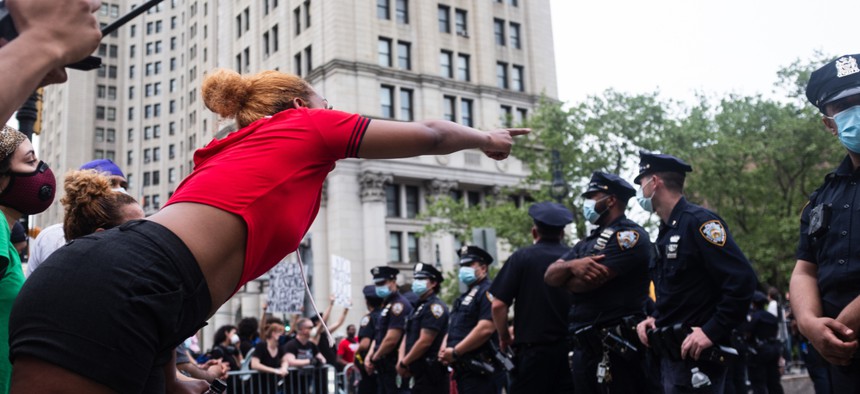Gov. Andrew Cuomo likes to tout himself as the can-do leader for crises big and small, but the omnipresent wartime leader from earlier in the pandemic appears to be sitting on the sidelines during the generational protests that have been roiling New York this week.
The governor’s response to the mass protests that have gripped the state for the past three nights has been mostly rhetorical up to this point. “It dishonors (George Floyd’s) death,” Cuomo said Sunday of the unrest. “The goal has to be effecting change: How do we use the energy to mobilize people to actually reform society?” In the absence of direction from the governor, local leaders appear to be acting on their own, with some upstate cities like Rochester receiving help from state police.
In New York City, where the most serious protests have erupted, Cuomo hinted that the National Guard could be mobilized. But whatever happens on Sunday night will fall purely under the purview of New York City Mayor Bill de Blasio, who has blamed the protests on unnamed outside agitators. The governor added that there were no current plans for a statewide curfew.
“I’ve spoken to the mayor – he understands the situation,” the governor said in response to being asked what the state would do to address any protests on Sunday in New York City. A state investigation into how the New York Police Department is handling protests is ongoing. In the meantime, the governor appears to be giving police the benefit of the doubt. “Ninety-nine-point-nine percent of them are good, hard-working police,” the governor said. “I am not going to make decisions off the videos. I understand how difficult the job is.”
Other governors and local leaders in other states are taking more active roles in addressing the worst unrest to hit the country in decades, from calling in the National Guard to personally going into the streets. State lawmakers and the mayor (who is now punting that issue to the state Legislature) have also become a useful tool for Cuomo, who has said they should decide whether to make police disciplinary records open to public release. “We know what needs to be done,” Cuomo added, although he has declined to detail how he would use his substantial political and legal influence to drive such change.
“We have had state police helping all the upstate cities,” he said Sunday. “I have the National Guard on standby.”
Further highlighting his reluctance to act is the fact that Cuomo has yet to wield his sweeping emergency powers during the new crisis – despite the dangers to public safety and health presented by sometimes-violent protests featuring thousands of people gathering in COVID-19 hotspots. It is not like the three-term governor has not explicitly drawn a relationship between the death of George Floyd and the public health crisis.
Given the political heat that New York City Mayor Bill de Blasio is facing over the protests and all the political variables associated with going against President Donald Trump, it is hard to argue with Cuomo’s delay in jumping headfirst into the tricky politics of police-related violence. The longer he maintains his wait-and-see approach to the protests, however, the more limited his options might become.
This happened when he delayed acting early in the pandemic – and it looks like it could be happening again.
NEXT STORY: George Floyd protesters, NYPD clash in Brooklyn


